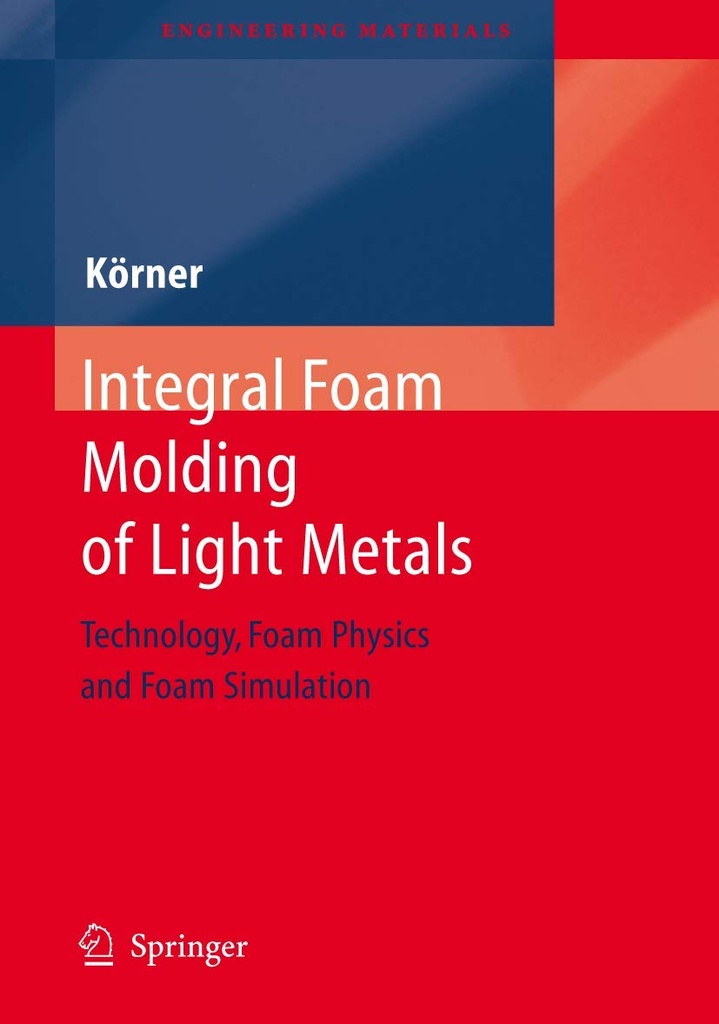Integral Foam Molding of Light Metals: Technology, Foam Physics and Foam Simulation
Authors: Carolin Koerner Publisher: Springer Edition: 1 Publish Year: 2008 ISBN: 9783540688389 A person with a new idea is a crank until the idea succeeds. Mark Twain Metal foams show outstanding properties: Low weight, high rigidity, high energy absorption capacity, high damping capacity, etc. They have attracted strong - dustrial and scienti?c interest during the last decade. A variety of methods has been developed to produce foams and the development of new, more sophisticated methods is still going on. On the one hand, there are only very few applications where metal foams can be directly employed without further processing. On the other hand, established metal foam production methods have one feature in common, they produce foam and not metal parts containing metal foam. In the majority of cases additional shaping and joining steps are necessary to transform the metal foam into a working functional element. In addition, the cellular structure demands for appropriate joining technologies which are often not yet available or expensive. As a result, the whole processing sequence is in general long and expensive. The logical consequence of the requirement to develop cost-e?ective techniques to produce metal parts with integrated cellular structure is the newly developed process of integral foam molding. Integral foam consists of a solid skin and a c- lular core. This is the fundamental construction principle which is ubiquitous in biological systems, e. g. the human skull, as well as in technical solutions, e. g. sa- wich constructions. The concentration of the material within the skin optimizes the moment of inertia and thus sti?ness and strength.
